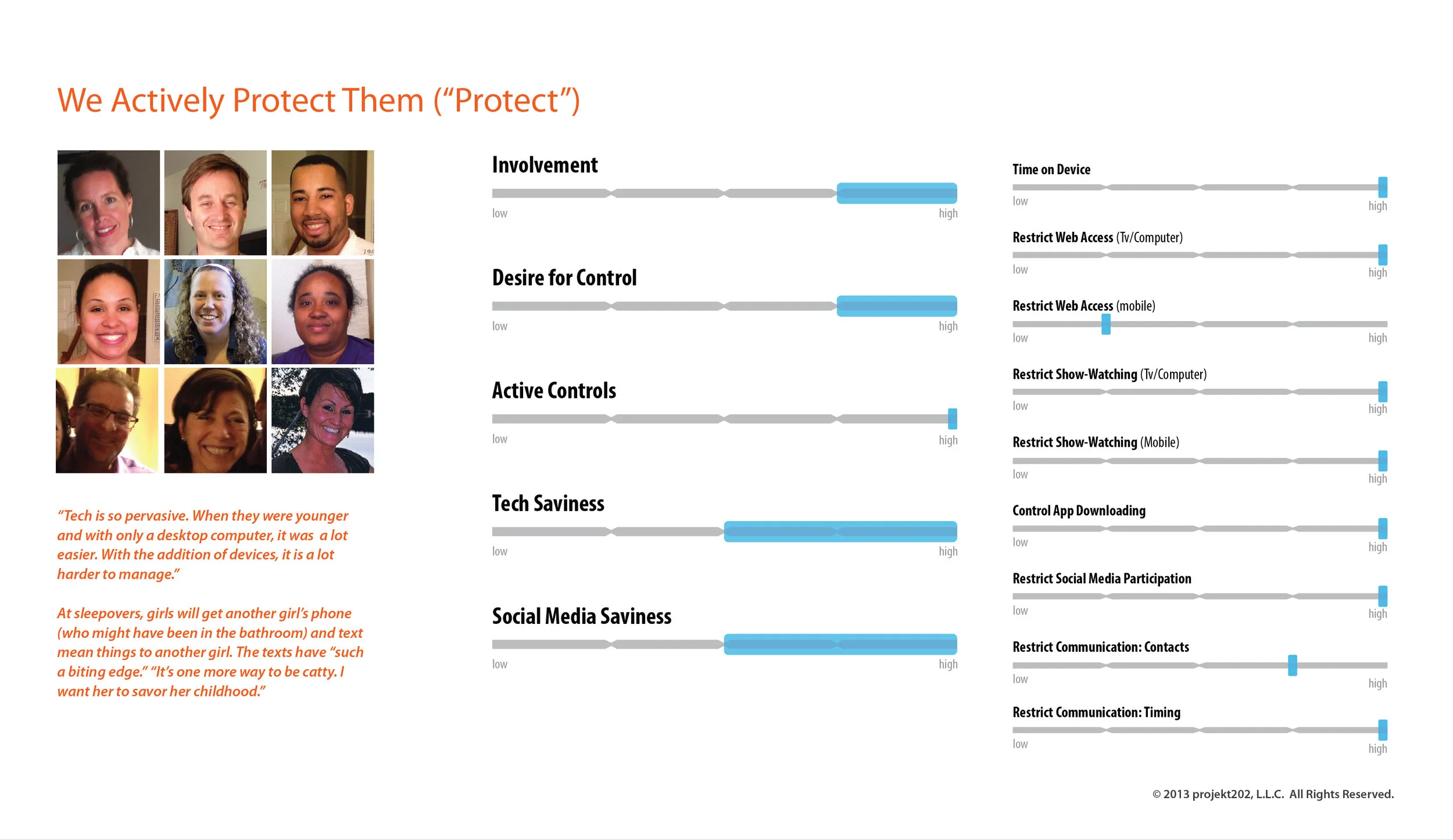Parental Controls for Smartphones
Projekt202, 2013
Problem - Our client realized that although there are parental-control products available for smartphones, many parents weren't using them. They asked us to find out what type of smartphone parental controls parents needed and would actually use while accounting for a variety of different parenting styles and allowing for customization in the severity of restrictions.
Solution - We repeatedly heard how busy parents are, so we wanted them to feel empowered instead of worrying about their child having a smartphone. Different concepts addressed various concerns, such as a quick setup and usage notifications that help parents stay ahead of issues like device over-usage, profanity, or bullying. Additionally, we explored ideas to help make their lives easier with features such as auto-notifications that integrate family calendars with group notifications and texting.
Documentation & Designs










Process Breakdown



Interviews, Analyzing Findings, & Identifying Personas
We visited parents and children at home to conduct contextual observations and interviews, asking about smartphone usage and the parents' concerns related to their children's use of them. We distilled key insights from our interviews and created an affinity diagram that helped us uncover different parent concerns. This included how parents felt about managing their children's smartphones, plus their own relationship with technology. While all parents want to protect their kids, they all had different ideas about what they wanted to protect them from and how they wanted to do it. We identified three key parenting types based on our research.
Key Findings: Although many parents we met with were concerned their children's access to devices and had set up parental controls for TVs and computers, most hadn't thought about parental controls for their kids' smartphones.



Concepts & Focus Groups
Using our findings, we brainstormed a variety of features and narrowed them down to those most helpful to parents. Using those features, we crafted a story with eight scenarios to test with the parents. We shared our designs and a questionnaire with a focus group made up of parents, some we already interviewed and some new, asking them to rate how the different features made them feel. At the end of the testing, the parents participated in a design concepting activity.
Key Findings: Parents already felt they were pulled in too many directions, and the idea of managing their kids’ smartphones seemed overwhelming.

